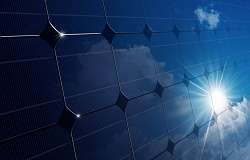
Breaking News
 Trump pardons Mets legend, 'Celebrity Apprentice' alum Darryl Strawberry over tax evasion co
Trump pardons Mets legend, 'Celebrity Apprentice' alum Darryl Strawberry over tax evasion co
 You WON'T BELIEVE How Much Money We're REALLY Sending To Israel!
You WON'T BELIEVE How Much Money We're REALLY Sending To Israel!
 China CANCELS U.S. Soybean Order?! Joel Salatin
China CANCELS U.S. Soybean Order?! Joel Salatin
 Ep 38 Jonathan Haidt: on The Anxious Generation: Childhood in Social Media Age & Fragile College ...
Ep 38 Jonathan Haidt: on The Anxious Generation: Childhood in Social Media Age & Fragile College ...
Top Tech News
 HUGE 32kWh LiFePO4 DIY Battery w/ 628Ah Cells! 90 Minute Build
HUGE 32kWh LiFePO4 DIY Battery w/ 628Ah Cells! 90 Minute Build
 What Has Bitcoin Become 17 Years After Satoshi Nakamoto Published The Whitepaper?
What Has Bitcoin Become 17 Years After Satoshi Nakamoto Published The Whitepaper?
 Japan just injected artificial blood into a human. No blood type needed. No refrigeration.
Japan just injected artificial blood into a human. No blood type needed. No refrigeration.
 The 6 Best LLM Tools To Run Models Locally
The 6 Best LLM Tools To Run Models Locally
 Testing My First Sodium-Ion Solar Battery
Testing My First Sodium-Ion Solar Battery
 A man once paralyzed from the waist down now stands on his own, not with machines or wires,...
A man once paralyzed from the waist down now stands on his own, not with machines or wires,...
 Review: Thumb-sized thermal camera turns your phone into a smart tool
Review: Thumb-sized thermal camera turns your phone into a smart tool
 Army To Bring Nuclear Microreactors To Its Bases By 2028
Army To Bring Nuclear Microreactors To Its Bases By 2028
 Nissan Says It's On Track For Solid-State Batteries That Double EV Range By 2028
Nissan Says It's On Track For Solid-State Batteries That Double EV Range By 2028
New process for manufacturing PV cells means cheaper solar power

This is because the cost, inefficiency and negative environmental impact that the manufacturing of these cells outweighs any potential savings provided by the resulting solar energy. If, however, cost could be were minimised, then solar power would be more able to compete with traditional fossil fuel-based methods for generating energy.
To overcome this hurdle, the EU-funded SOLNOWAT project has developed an innovative dry process for manufacturing PV solar cells.
Going dry
PV cells are typically created via a wet chemical process that etches away layers of silicon from a crystalline wafer, leaving behind the solar cell. The SOLNOWAT process replaces the expensive and inefficient wet chemical process with the use of atmospheric pressure dry etching technology – a process that cuts costs and speeds up production. Because less silicon is removed during dry etching, the resulting cells are darker, making them very efficient at absorbing light. In fact, they are so efficient that they have been classified as having zero global warming potential.

 Carbon based computers that run on iron
Carbon based computers that run on iron

